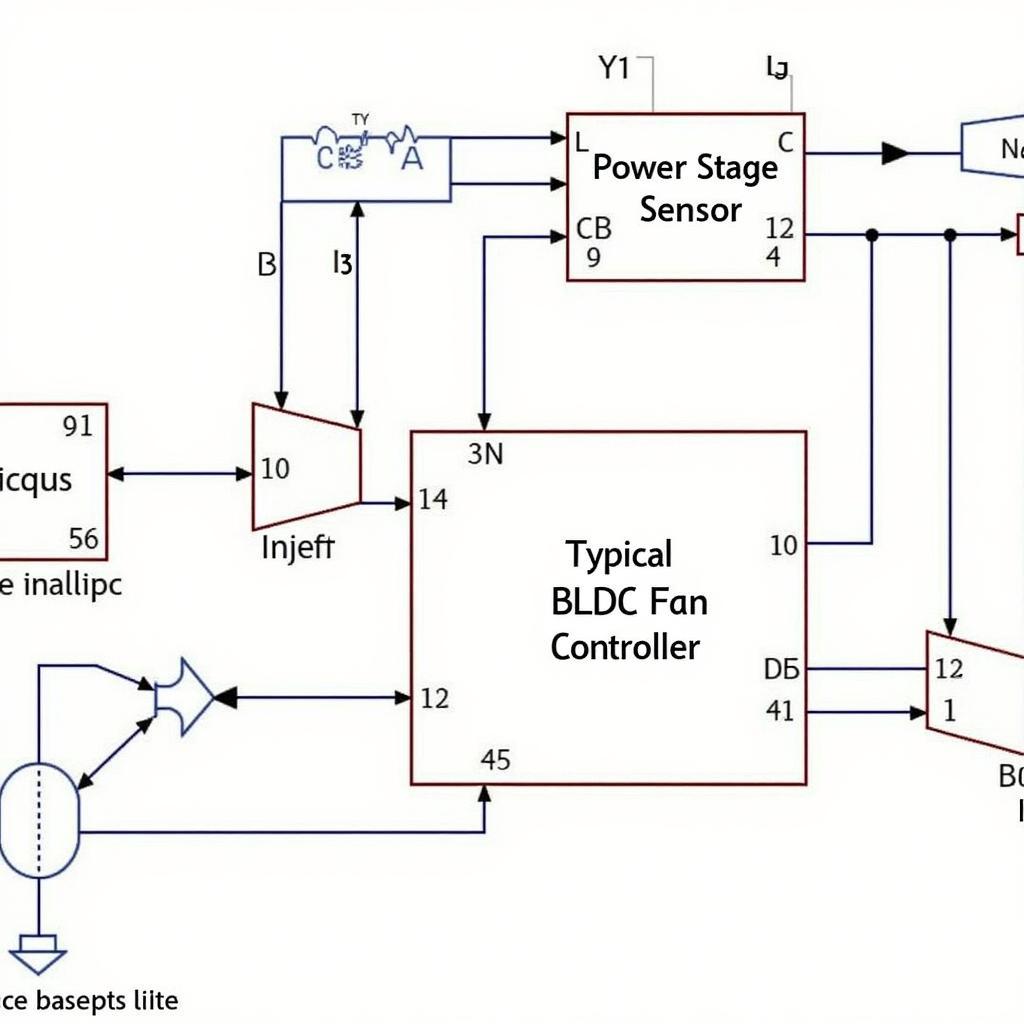Bldc Fan Controllers are essential components in modern appliances, ensuring optimal performance and energy efficiency for brushless DC (BLDC) fans. These controllers regulate fan speed, power consumption, and other parameters, contributing to a more comfortable and cost-effective user experience.
What is a BLDC Fan Controller?
A BLDC fan controller is an electronic circuit that manages the operation of a brushless DC (BLDC) motor. Unlike traditional AC fans that rely on brushes to commutate the motor, BLDC fans use electronic commutation, making them more efficient, quieter, and longer-lasting. The controller acts as the brain of the system, receiving input from various sensors and adjusting the motor’s speed and power output accordingly.
How Does a BLDC Fan Controller Work?
BLDC fan controllers utilize sophisticated circuitry to control the flow of current to the motor’s windings. By precisely timing the current pulses, the controller creates a rotating magnetic field that interacts with the motor’s permanent magnets, causing it to spin.
 BLDC Fan Controller Circuit Diagram
BLDC Fan Controller Circuit Diagram
The controller typically receives input from the following sources:
- Speed Control: A potentiometer or digital interface allows users to adjust the desired fan speed.
- Temperature Sensor: A built-in or external temperature sensor provides feedback to the controller, enabling temperature-based speed regulation.
- Hall Effect Sensors: These sensors detect the rotor’s position, providing critical information for precise commutation timing.
Advantages of Using BLDC Fan Controllers
- Enhanced Energy Efficiency: BLDC fan controllers optimize motor performance, resulting in significantly lower power consumption compared to conventional AC fans.
- Precise Speed Control: Users can fine-tune fan speed to their liking, providing greater comfort and customization options.
- Reduced Noise Levels: BLDC motors operate silently, eliminating the humming noise often associated with traditional fans.
- Increased Lifespan: The absence of brushes reduces friction and wear, extending the operational life of both the motor and the controller.
Types of BLDC Fan Controllers
- Single-Phase Controllers: These controllers are commonly used in low-power applications, such as small fans and computer cooling systems.
- Three-Phase Controllers: Designed for higher power requirements, three-phase controllers are found in larger fans, industrial equipment, and electric vehicles.
 Different Types of BLDC Fan Controllers
Different Types of BLDC Fan Controllers
Choosing the Right BLDC Fan Controller
Selecting the appropriate BLDC fan controller depends on several factors, including:
- Motor Specifications: The controller must be compatible with the motor’s voltage, current, and power ratings.
- Application Requirements: Consider the desired speed range, control interface, and environmental conditions.
- Cost and Availability: Controllers are available at various price points and feature sets.
Applications of BLDC Fan Controllers
BLDC fan controllers are widely used in various applications, including:
- Home Appliances: Ceiling fans, table fans, exhaust fans, and air purifiers.
- Computer Systems: CPU coolers, graphics card coolers, and power supply units.
- Automotive Industry: Cooling systems for engines, batteries, and cabin climate control.
- Industrial Equipment: Ventilation systems, HVAC systems, and machinery cooling.
Future Trends in BLDC Fan Controller Technology
The field of BLDC fan control continues to evolve, driven by advancements in semiconductor technology and increasing demand for energy-efficient solutions. Some emerging trends include:
- Integration of Smart Features: Connectivity to smart home ecosystems, voice control, and advanced scheduling capabilities.
- Improved Sensor Technologies: More accurate and reliable sensors for precise speed and temperature regulation.
- Miniaturization and Cost Reduction: Smaller and more affordable controllers for wider adoption in consumer electronics.
Conclusion
BLDC fan controllers are indispensable components in modern fan systems, delivering enhanced efficiency, quieter operation, and extended lifespan. As technology advances and energy conservation becomes increasingly crucial, the role of these controllers will continue to grow, shaping the future of ventilation and cooling solutions.
FAQs
Q: Can I replace my existing AC fan with a BLDC fan?
A: In most cases, yes. However, it’s crucial to ensure compatibility between the new BLDC motor and your existing wiring and mounting setup.
Q: Are BLDC fans more expensive than AC fans?
A: While BLDC fans may have a higher upfront cost, their energy savings and longer lifespan often offset the initial investment.
Q: What are the typical speed settings on a BLDC fan controller?
A: Speed settings vary depending on the model, but most controllers offer a range of 3 to 5 speeds, with some offering stepless speed adjustment.
Q: How do I troubleshoot a faulty BLDC fan controller?
A: Basic troubleshooting involves checking connections, ensuring proper voltage supply, and inspecting the controller for any visible damage. However, it’s often best to consult a qualified technician for complex issues.
Q: What is the warranty on a typical BLDC fan controller?
A: Warranty periods vary depending on the manufacturer and model. Always check the product documentation for specific warranty information.
Need assistance with BLDC fan controllers or have any other inquiries? Contact us at Phone Number: 0903426737, Email: fansbongda@gmail.com, or visit our address: Tổ 9, Khu 6, Phường Giếng Đáy, Thành Phố Hạ Long, Giếng Đáy, Hạ Long, Quảng Ninh, Việt Nam. Our dedicated customer support team is available 24/7 to assist you.


